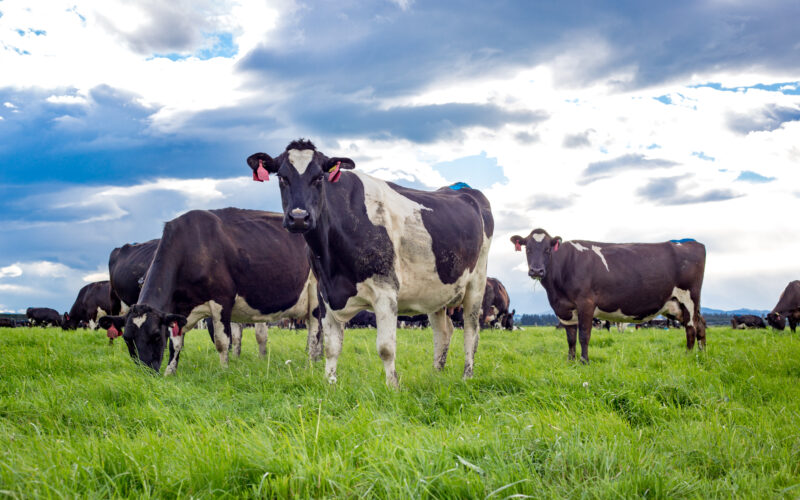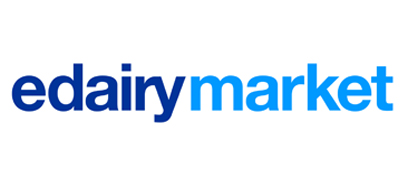
By Cristina Alvarado, NZX head of dairy insights.
August was a dynamic month for the global dairy industry, culminating in softer pricing on the Global Dairy Trade and a sharper decline in the first September event, No 387.
The transition between the months brought notable developments across production, trade and pricing, offering key signals for the period ahead. Fonterra’s agreement to sell its consumer brands and associated businesses to Lactalis (subject to shareholder approval) marked a landmark structural shift, while the New Zealand-UAE trade agreement coming into effect added further momentum to diversification.
At the same time, milk output strengthened in several regions, though recent GDT and Pulse results suggest demand is not keeping pace.
New Zealand production continues to set records. July milksolids collections rose 2.2% year on year to 28.04 million kgMS, while tonnage output increased 0.9% YoY to 312,000 tonnes – both new July records.
Cumulative collections for the season are now 8.9% higher in milksolids and 6.7% higher in tonnage compared with last year.
Strong winter milking, incentivised by payout settings and supported by heavier use of supplementary feed, has driven this expansion. Palm kernel imports are running nearly 30% higher on an annual rolling basis.
The NZX Milk Production Predictor points to further growth of 1.0% YoY for September and 2.4% for October, suggesting more record highs are likely.
Global output trends were mixed. United States milk production rose 3.4% YoY in July to 19.6 billion pounds, reflecting herd expansion and efficiency gains.
By contrast, Australia recorded a -4.0% decline due to adverse weather. Argentina and Uruguay reported strong YoY gains of 7.7% and 3.0% respectively, while China posted a -3.4% contraction in July output.
European Union production edged up 0.2% YoY for June. Together, these figures show supply remains firm across most major export regions, with Oceania providing the main divergence.
On the GDT platform, results reflected a changing balance. After a 0.7% lift at Event 385, prices slipped -0.3% at Event 386, with SMP down -1.8% and butter down -1.0%, offsetting minor gains in WMP and AMF.
The following Pulse auction confirmed this softer tone, with WMP easing -1.7% and New Zealand SMP down -1.6%. This set the stage for the sharp -4.3% fall at Event 387, where all products except cheddar declined significantly.
With seasonal volumes increasing, the relaxation of instant WMP rule changes, and firm output across multiple regions, supply-side momentum appears to be outpacing incremental demand.
Trade data released in August for June and July pointed to continued strength in values, though volume trends were uneven. In July, New Zealand exports were stable at 279,295 tonnes (+0.2% YoY), but export value rose 15.4% YoY. Year-to-date, volumes are up 2.0% and values 17.2%. The United States posted strong June growth (+15.2% in volume, +26.1% in value YoY), while Argentina’s gains were even larger at 31.6% and 38.4% respectively. By contrast, Australia’s exports contracted sharply in both volume (-20.5%) and value (-6.4%).
Europe shipped 6.6% less product but saw export values increase 8.9% YoY, reflecting firm pricing. Meanwhile, China’s imports rose 5.9% in volume and 10.6% in value, showing resilience in demand.
There are market implications in the fact that global supply is rising at a time when demand indicators remain uneven. Product availability looks ample through the coming months, particularly with New Zealand entering peak season alongside strong contributions from the US and South America.
Recent price performance shows the market is already sensitive to this imbalance, with declines across core commodities.
If demand does not improve, downward pressure could intensify through September and October, especially in milk powders. For farmers and manufacturers, this environment reinforces the importance of staying alert to market shifts and planning ahead.
Late August and early September data confirm strong supply fundamentals but there is a growing question mark over demand capacity. For producers, this means monitoring market developments closely will be essential, as supply strength is already weighing on prices.
With volatility likely to remain elevated, risk management will be critical in the months ahead. Using available tools such as milk futures or fixed-price contracts can help provide greater certainty and protect against further downside pressure.
You can now read the most important #news on #eDairyNews #Whatsapp channels!!!
🇺🇸 eDairy News INGLÊS: https://whatsapp.com/channel/0029VaKsjzGDTkJyIN6hcP1K























